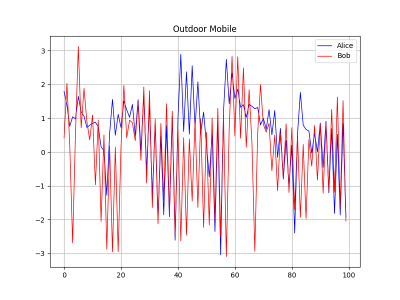Wireless Networking

In recent years, with the rapid development of Internet of Things technology, the application and popularization of intelligent sports equipment in residents’ lives have become extensive. As a sport suitable for all ages, badminton is deeply loved by the masses. This paper designs a smart badminton racket to help students improve their badminton skills by providing real-time training data and three-dimensional posture information.
- Categories:
 9 Views
9 Views
IPv6 Hitlist 1M is an open-source dataset provided by Gasser et al., aimed at creating a comprehensive list of active IPv6 addresses, incorporating results from multiple public address sets and updating daily. We selected the probing results from May 4, 2024, to May 10, 2024. This dataset contains a total of 24.5 million addresses, from which we selected the top 1 million addresses as IPv6 Hitlist 1M.
- Categories:
 8 Views
8 Views
IPv6 Hitlist 1M is an open-source dataset provided by Gasser et al., aimed at creating a comprehensive list of active IPv6 addresses, incorporating results from multiple public address sets and updating daily. We selected the probing results from May 4, 2024, to May 10, 2024. This dataset contains a total of 24.5 million addresses, from which we selected the top 1 million addresses as IPv6 Hitlist 1M.
- Categories:
 2 Views
2 Views
The Smart Home Device Dataset consists of 5000 samples collected at an hourly interval starting from January 2022, representing consumer electronics and IoT-enabled devices in a home automation environment. Each entry is associated with a unique device ID, ensuring identification of distinct devices. The dataset captures real-time sensor readings, including temperature variations (18°C to 30°C), power consumption levels (10W to 500W), and user activity states (Active, Idle, or Sleep), which provide contextual insights into device operation.
- Categories:
 239 Views
239 Views
Recently, large-scale and mega low earth orbit (LEO) constellations have become the primary development trends in satellite networks.Considering the complex topology and limited processing capabilities of LEO satellites, traditional distributed routing algorithms with significant flooding overhead are not suitable for the era of mega constellations. In this context, centralized routing technology based on Software Defined Network (SDN) architecture has been widely applied.
- Categories:
 42 Views
42 Views
An In-depth Analysis of Thermal Management Systems for Wireless Charging in Electric Vehicles
1. Introduction
Wireless charging technology is revolutionizing electric vehicles (EVs) by offering a convenient alternative to traditional charging. This technology enhances user experience and supports the growth of autonomous EV fleets. As electrification of transportation accelerates, effective thermal management becomes crucial to address heat generation during inductive power transfer, ensuring system reliability and longevity.
- Categories:
 114 Views
114 Views
This dataset includes ALVR statistics (.json) and Wireshark packet traces (.csv) for a wide range of single-user and multi-user PCVR configurations. Our configurations are based on ALVR and SteamVR. For each user, we stream a video game from a wired server (desktop or laptop) to a wireless head-mounted display (Meta Quest 2 or 3) over Wi-Fi. In each case, the data was captured on the server.
- Categories:
 113 Views
113 Views
Self-Aligning IPT Pads for Efficient High-Power Wireless Charging for EV
Introduction
- Categories:
 76 Views
76 Views
DALHOUSIE NIMS LAB ATTACK IOT DATASET 2025-1 dataset comprises of four prevalent types attacks, namely Portscan, Slowloris, Synflood, and Vulnerability Scan, on nine distinct Internet of Things (IoT) devices. These attacks are very common on the IoT eco-systems because they often serve as precursors to more sophisticated attack vectors. By analyzing attack vector traffic characteristics and IoT device responses, our dataset will aid to shed light on IoT eco-system vulnerabilities.
- Categories:
 346 Views
346 Views